Along with Ramadan, Malaysia left a lasting impression on us because of the heat. Having cycled in New Zealand and Australia for 5 months gave us relatively moderate temperatures. We experienced a heat wave throughout our first three weeks in New Zealand and another as we set out from Melbourne, but the climate in Malaysia was completely different. Beginning with our first evening in Singapore, we noticed that the heat and humidity are persistent, even at night – the only reprieve is while it’s raining.
After our first two mornings of starting in blazing heat at 9am (and meeting a fellow cyclist who had already covered 30km by 8am while we were ordering breakfast), we decided that we’d try move our morning ritual up by an hour. Early mornings now meant that we got to experience another phenomenon of the heat and humidity: dew in warm weather. With the humidity over 90% in the morning and a bike that was stored in a cool house, we had dew forming on our bike at 26 °C/ 80 °F the moment we stepped outside. It feels like a really weird phenomena to see any metal part of the bike getting covered by a thin film of water… In the more mountainous regions of Malaysia near Bentong and the Cameron Highlands, we could see clouds forming in the forests the moment the sun rose. Large quantities of water are “boiling” in the Indian ocean, and the morning sun creates the first turbulence of those water masses in the air… the contact with the local topography creates some clouds just a few dozens of meters in front of you on the road! This was particularly interesting to watch as we made our way up to the Cameron Highlands one morning – were we watched the fog/clouds appear suddenly.
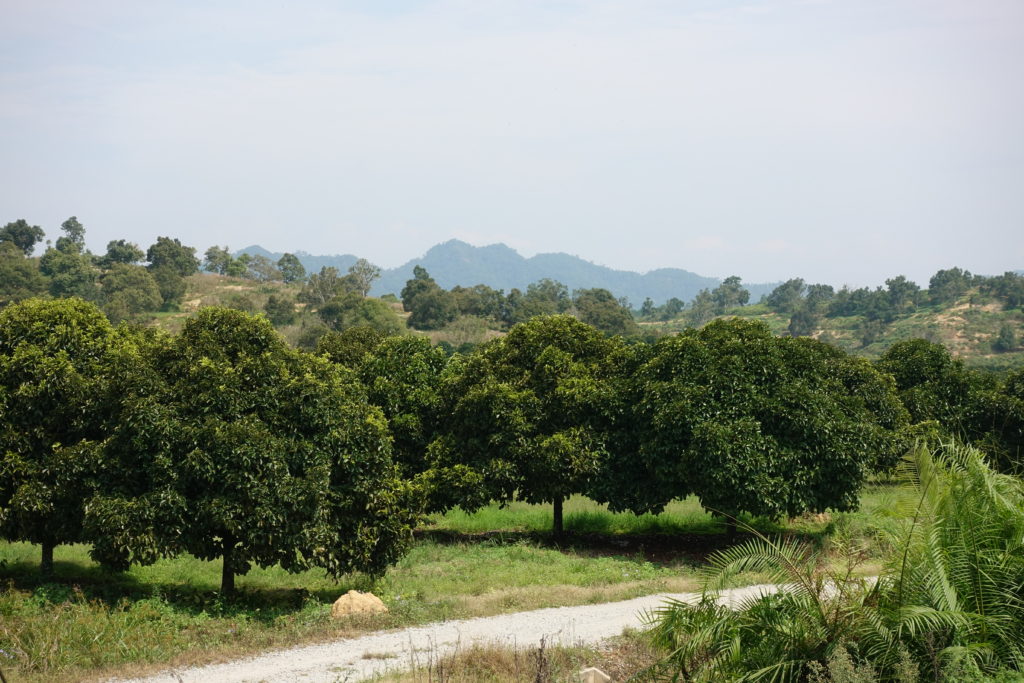
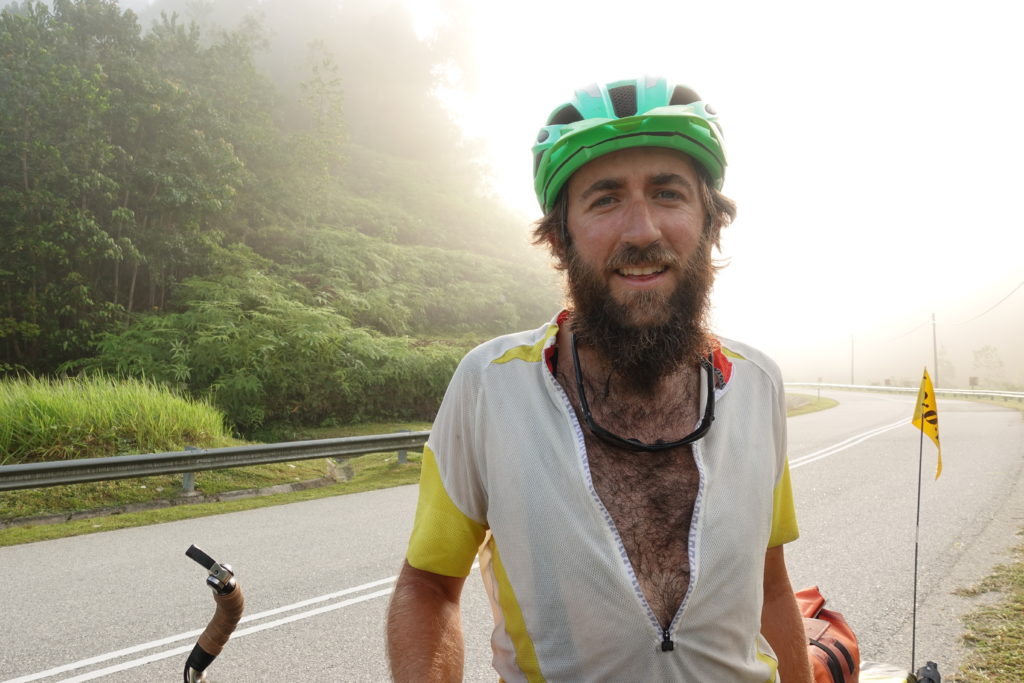
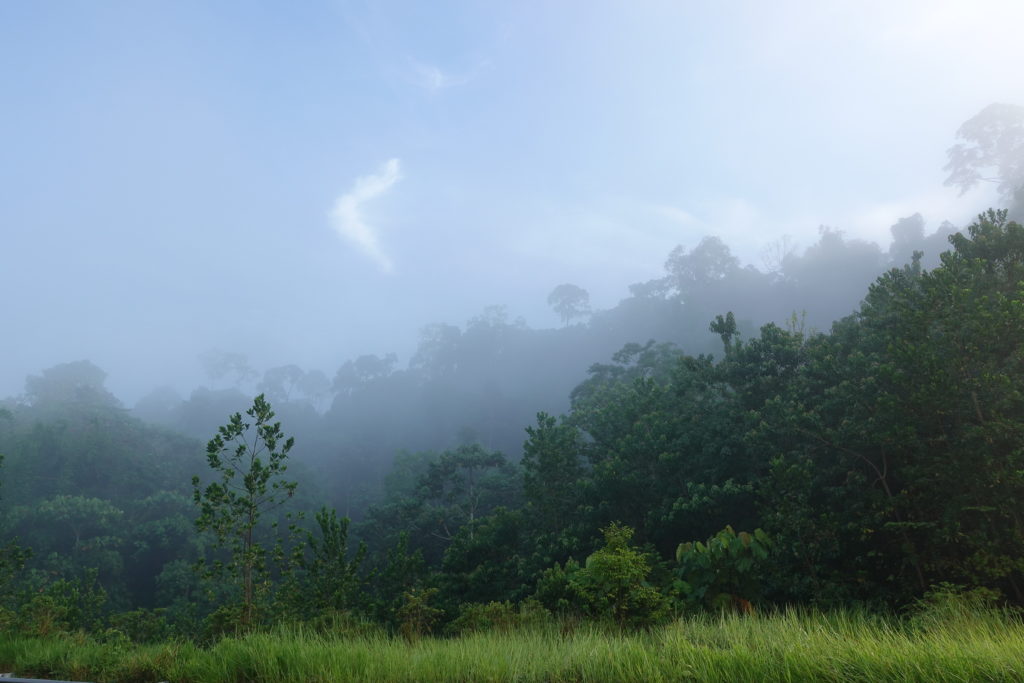
For dealing with the heat and humidity, Cédric and I made stops for water or iced coffee almost every 10 km – this gave us a break from the sun and a way to cool down. We also prolonged our lunches for up to two hours. Being on the equator, the sun shines right over our heads at noon, i.e. even trees on the side of the road do not make any shade any longer. Taking these longer breaks also allowed us to connect with and talk to the locals since everyone seemed to congregate in the shade of a gas station awning, restaurant, or place of worship. As written in a previous post, cycling during the Ramadan period made us a lot more inclined to take a break with the Malay-Chinese community, first because they were usually the only shops open, and then because we felt that we would offend/annoy the Muslim Malays while eating and drinking during the daytime hours (and no way we could cycle 4/5h daily without drinking!). In the evening, the comfort of an air-conditioned room and cold shower was too enticing to even consider camping.
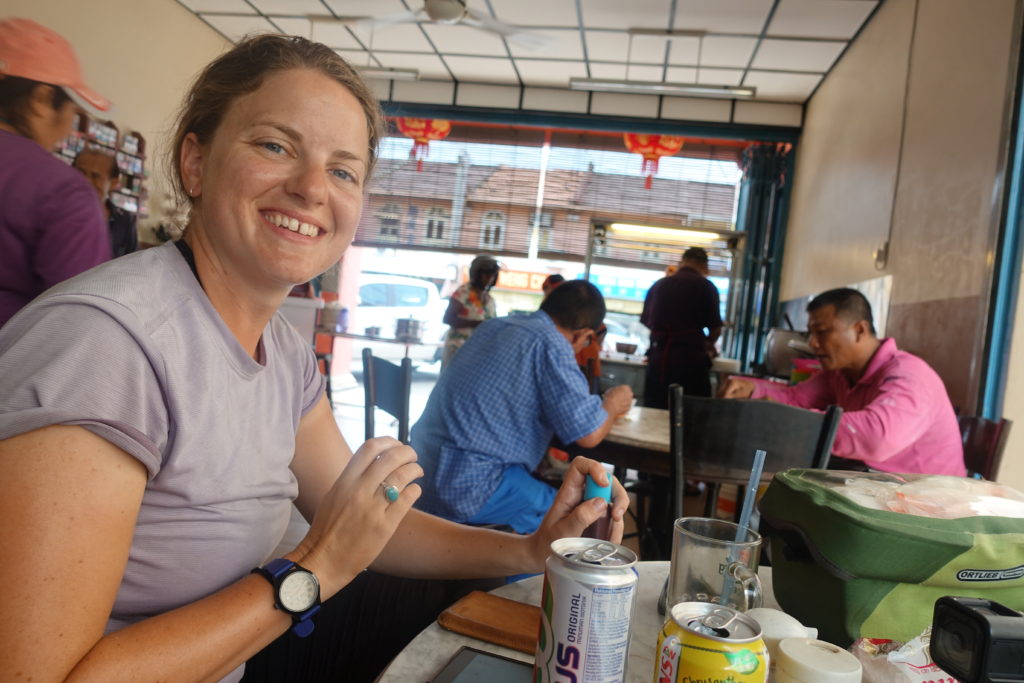
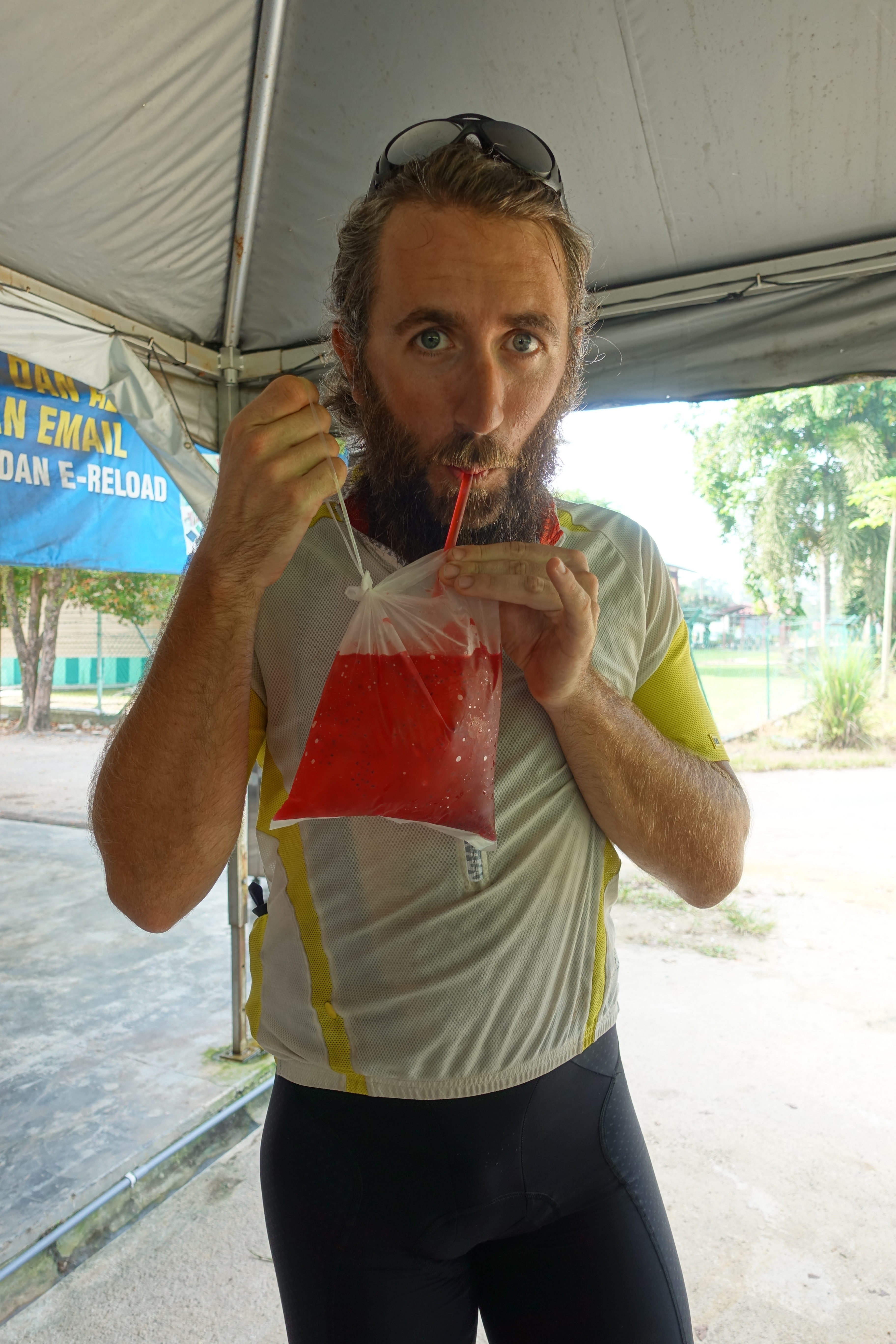

Another way to seek refuge from the heat was to cycle up to the Cameron Highlands, at an average height of 1600 meters above sea level. What was once a retreat for many British a century ago is now a holiday destination for thousands of Malaysians and tourists, alpine-inspired mega hotels and all. Due to its climate, the Highlands is also home to tea plantations and greenhouses that provide Malaysia with ‘exotic’ fruits such as strawberries. Initially, Cédric an I thought we’d forgo the 2000m climb up to the highlands, but as the days in Malaysia progressed, the idea of cool, enjoyable air became too tempting. The idea of cycling across Kuala Lumpur on 2×4 lanes highways made the choice even easier! From Sungai Koyan, we cycled up to the Cameron highlands loaded with 15 liters of water for the journey. Once the climb became difficult, Cédric and I were taking water breaks and seeking shade literally every 3 km (or 30 minutes…) with our shirts completely drenched with sweat.
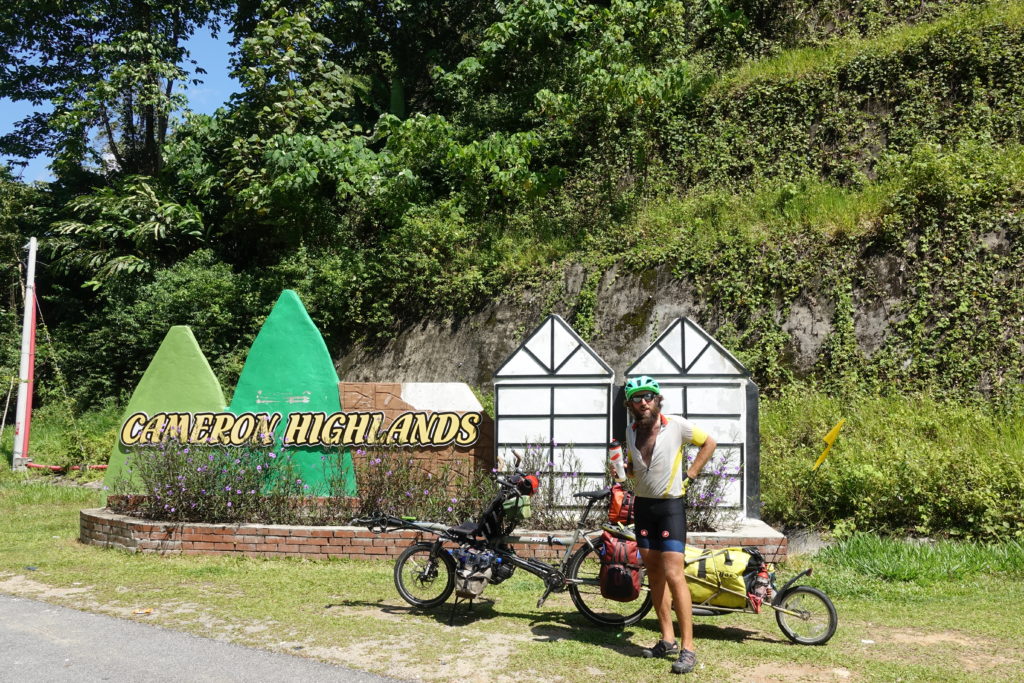
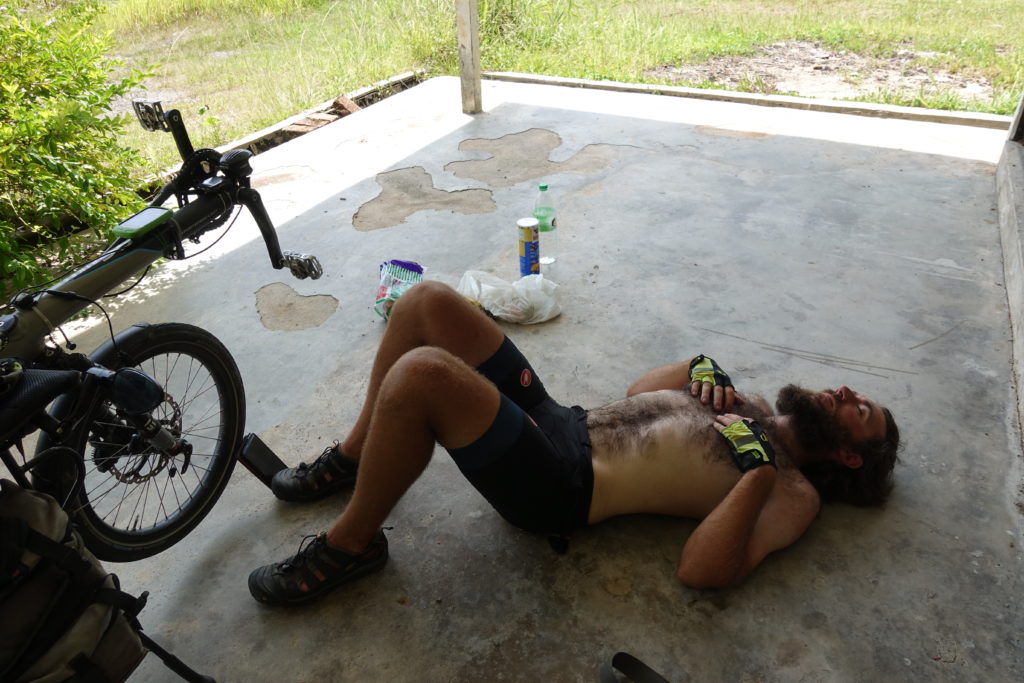
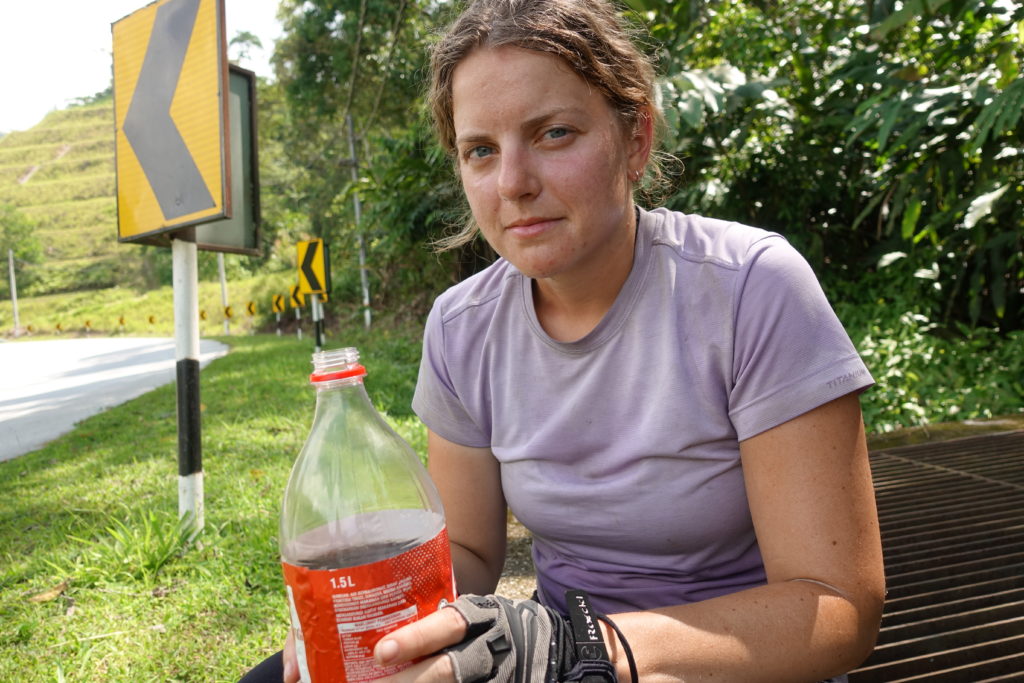
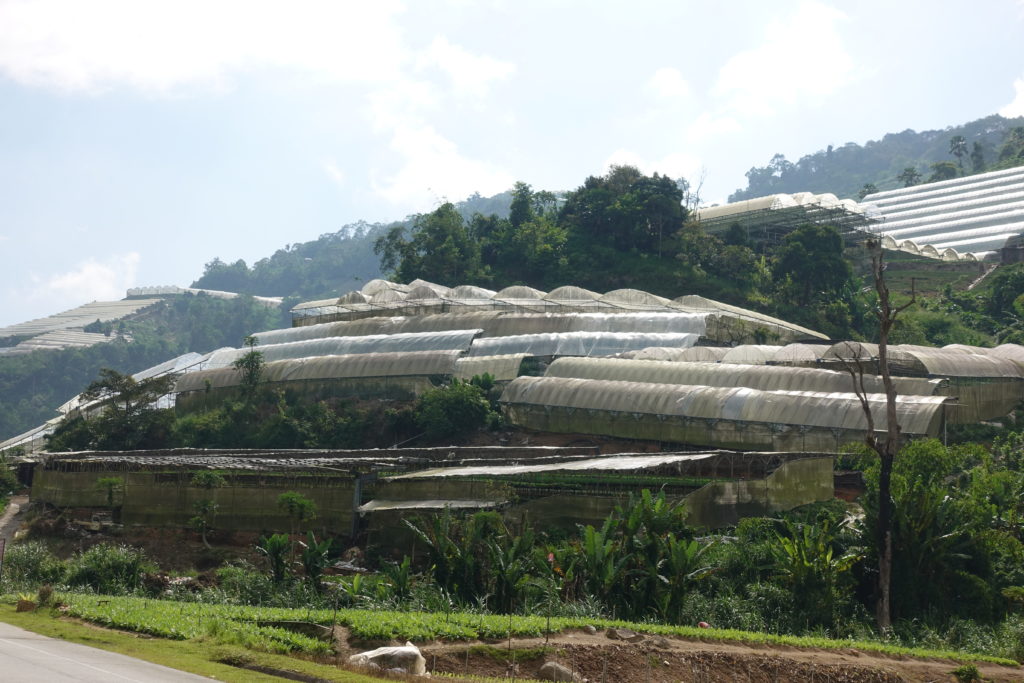
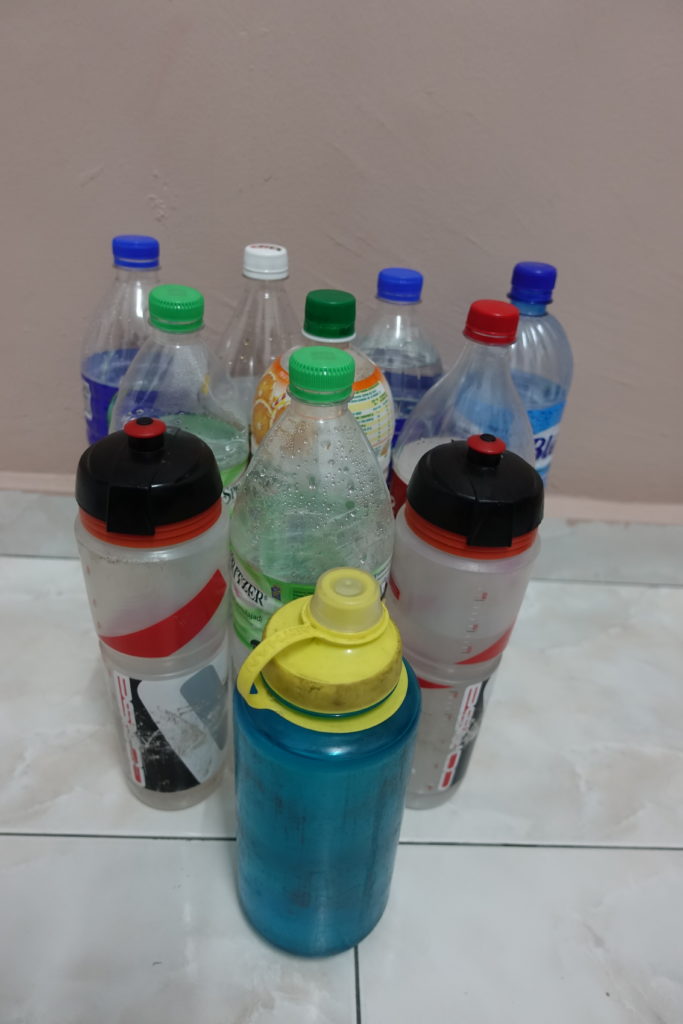
We made it up to Ringlet in the late afternoon and took the first accommodation that we could find – and were surprised when we noticed that the room didn’t include an air conditioner (every single house has this device in Malaysia, and car drivers seem to never switch off their engines, probably worries that the AC would not start again!). However, the air began to cool in the evening and the morning air was still fresh (almost chilly, we were not used to a bitterly cold 20°C!) when we cycled up towards Tanah Rata around 9am the next day. We spent the rest of the day on a rented scooter (being not excited to have to cycle up and down the hills to various viewpoints on a rest day) and zipped up and down the hills to check out tea plantations. The evening, once again, was enjoyable and cool.
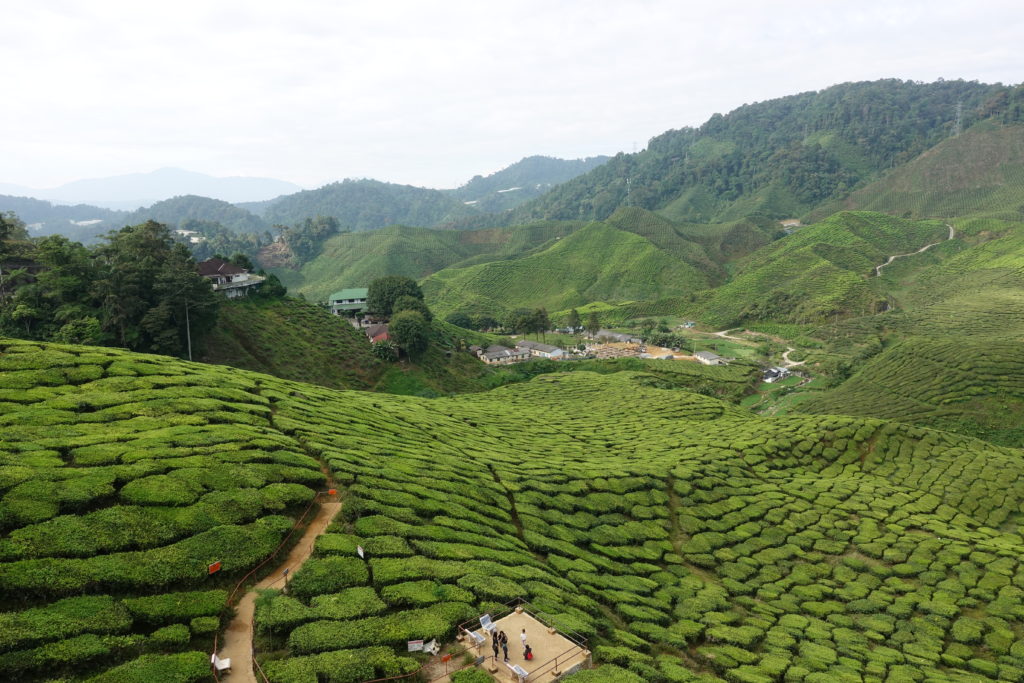
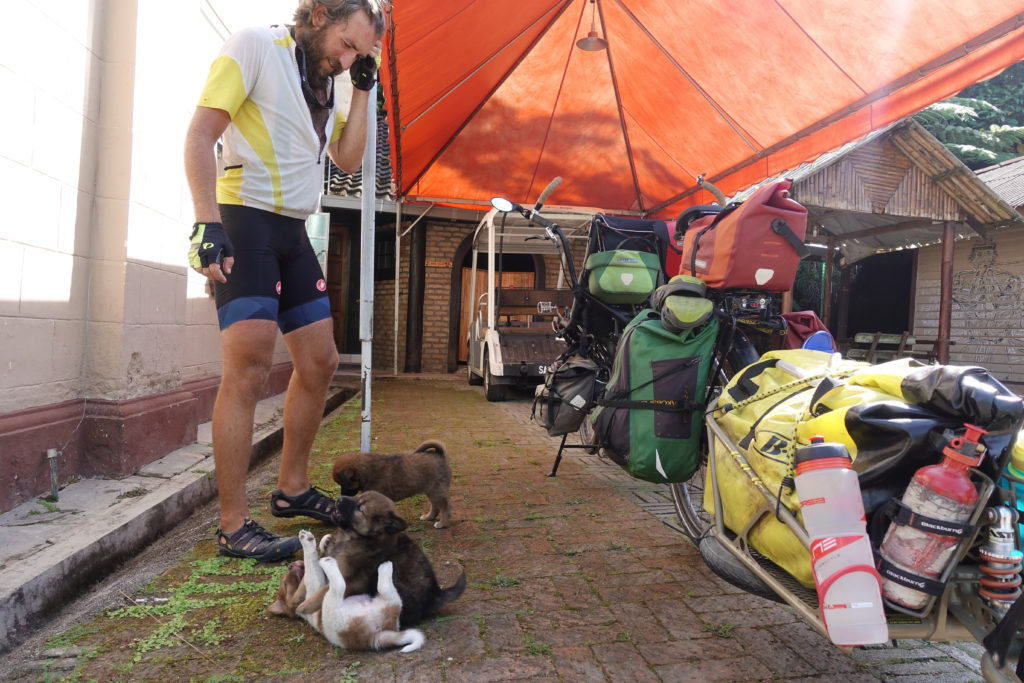
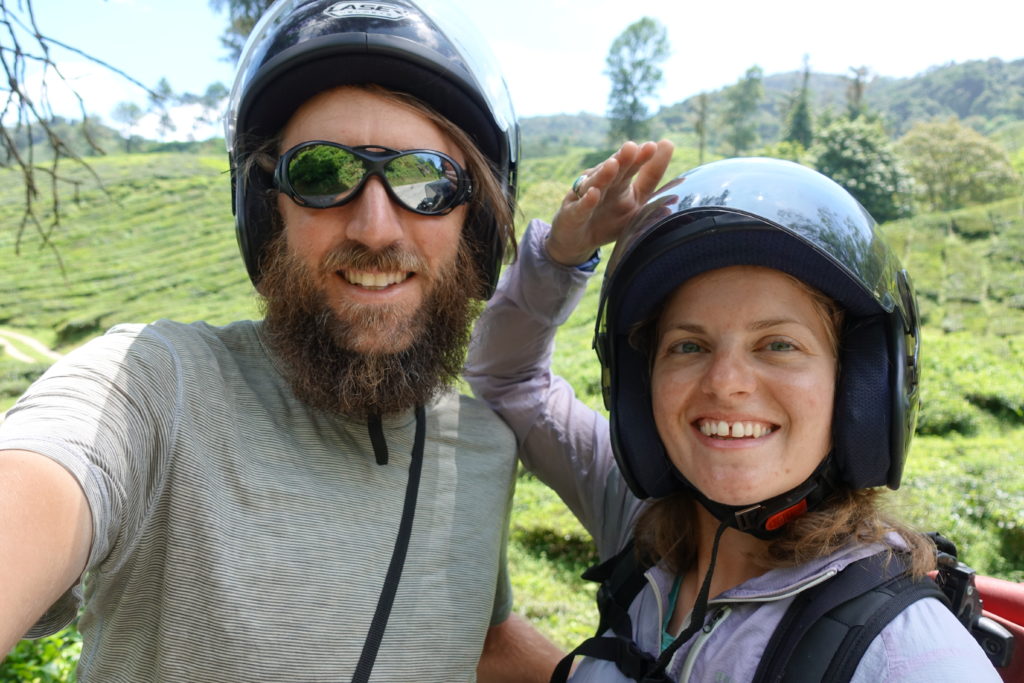
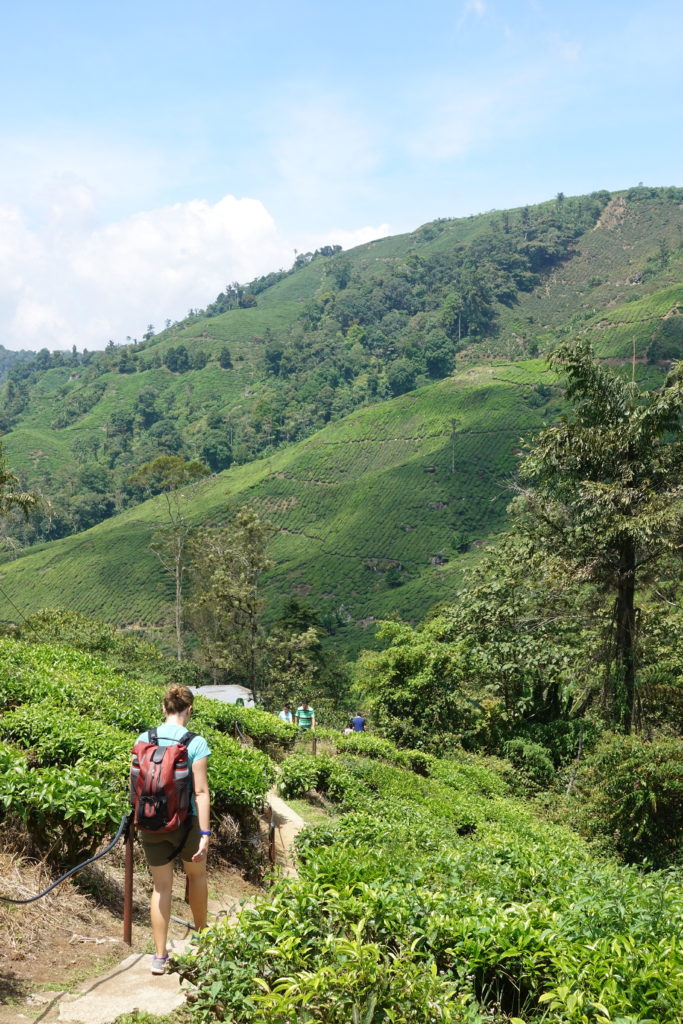
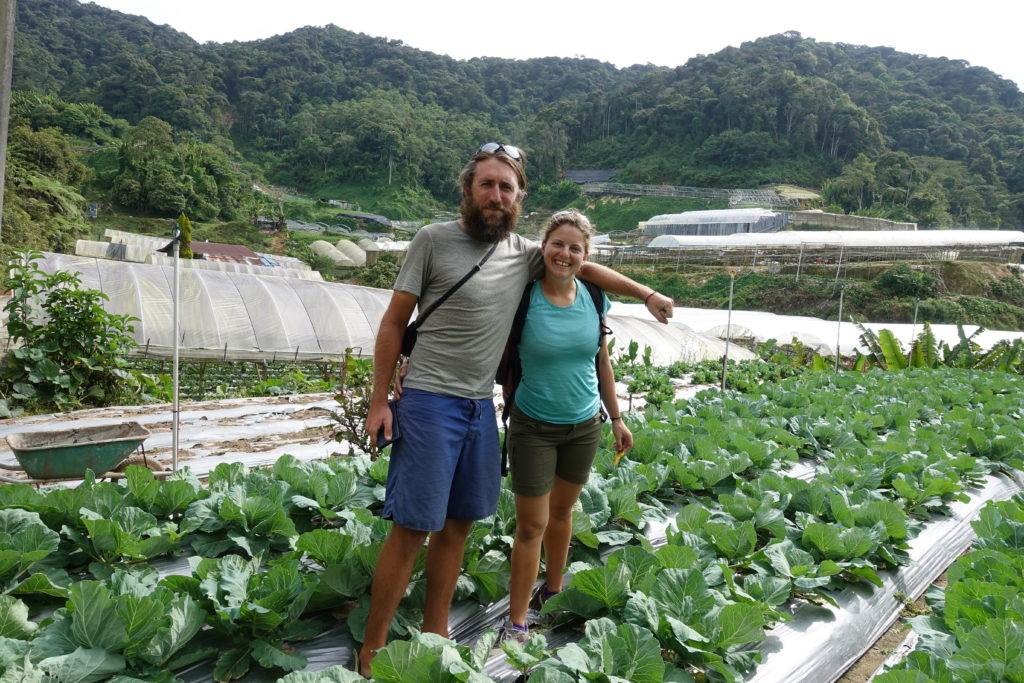

The next morning, Cédric and I started our decent back down into Malaysia’s low lands. On the way down, we had the chance to meet other cyclists (who were on a scooter and mission to get a vital bike part in Ipoh) and were able to concurrently film each other while making the big descent at 60kph. While Cédric and I were getting lunch at the bottom of the road, I was already reminiscing on how cool the temperatures were in the Cameron Highlands, wishing that this region could have been a bit bigger.
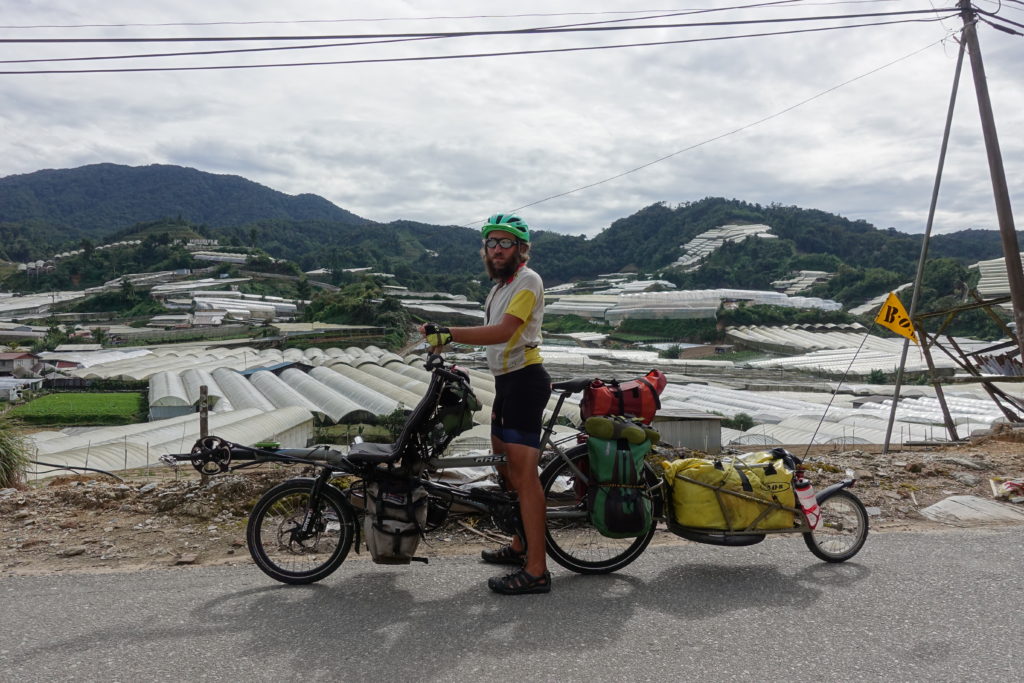
Descent, seen from the scooter:
Seen from the bike:
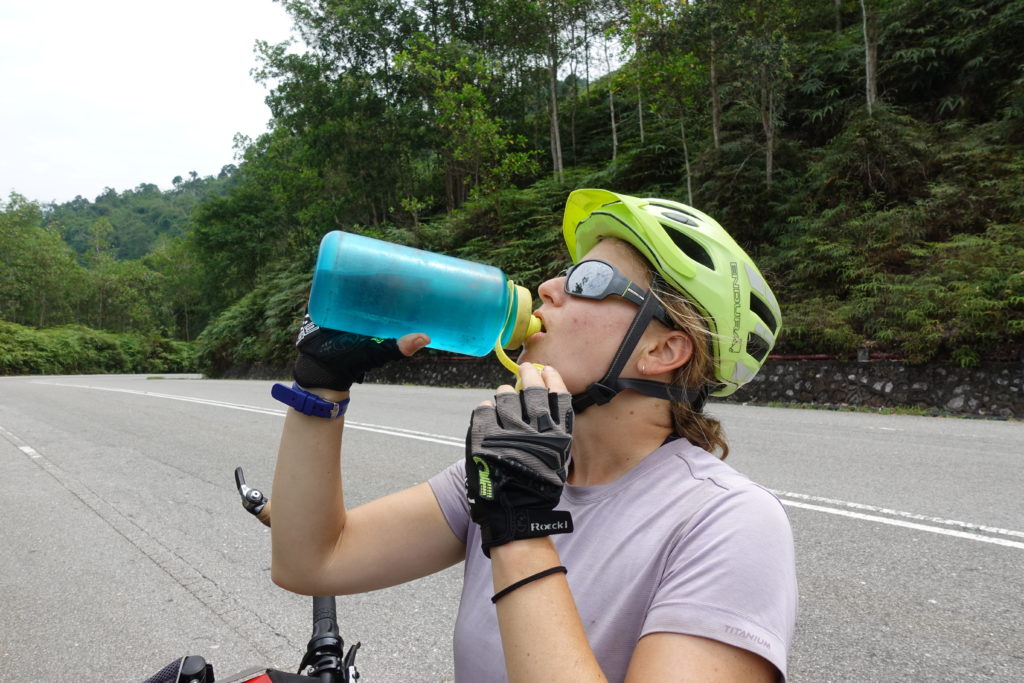
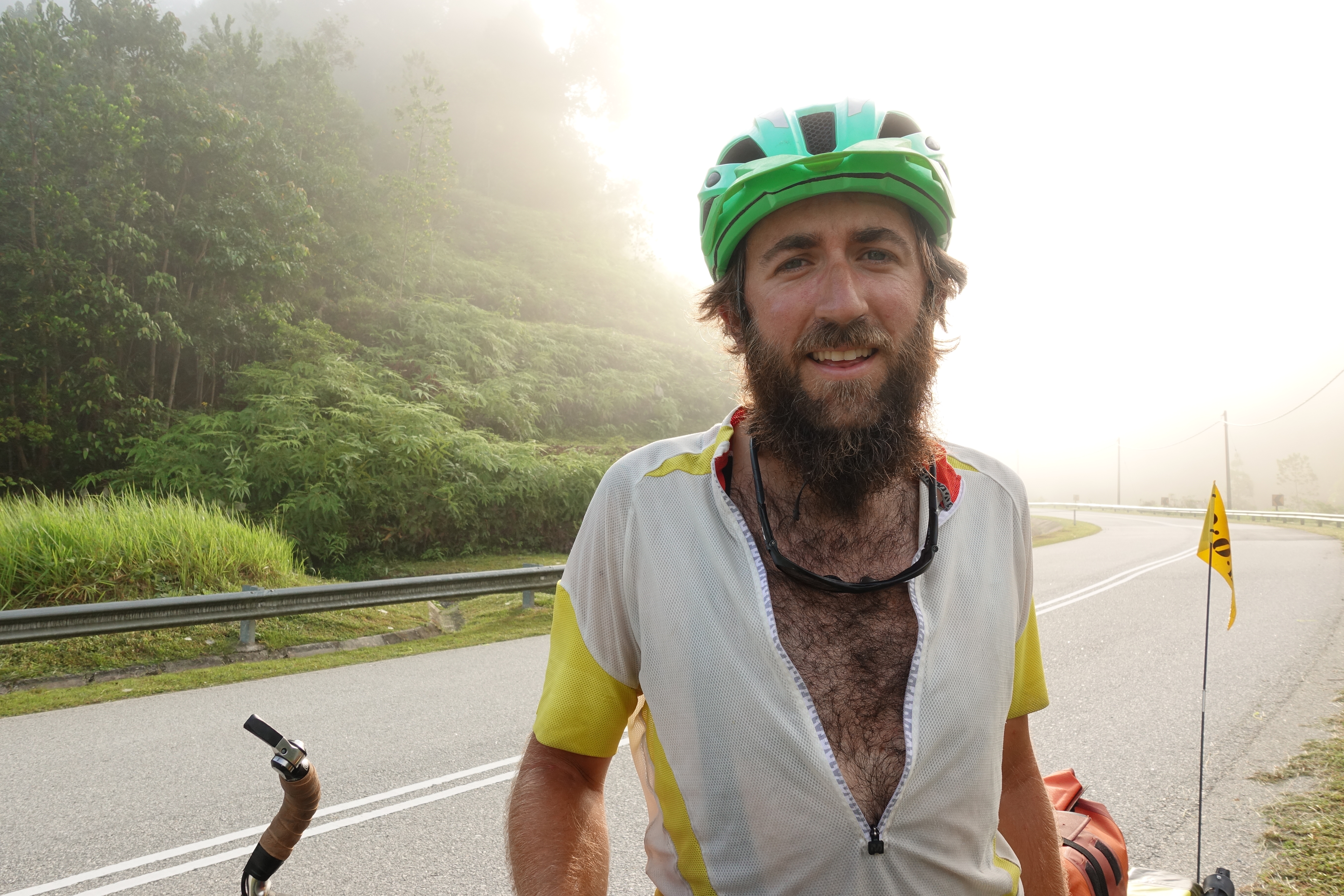
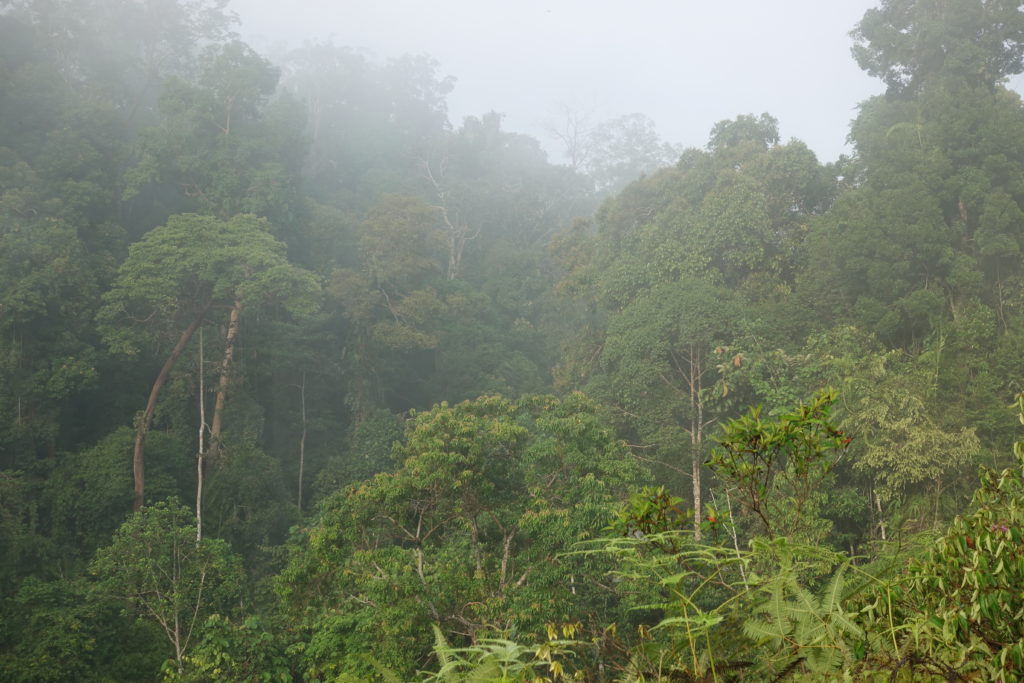
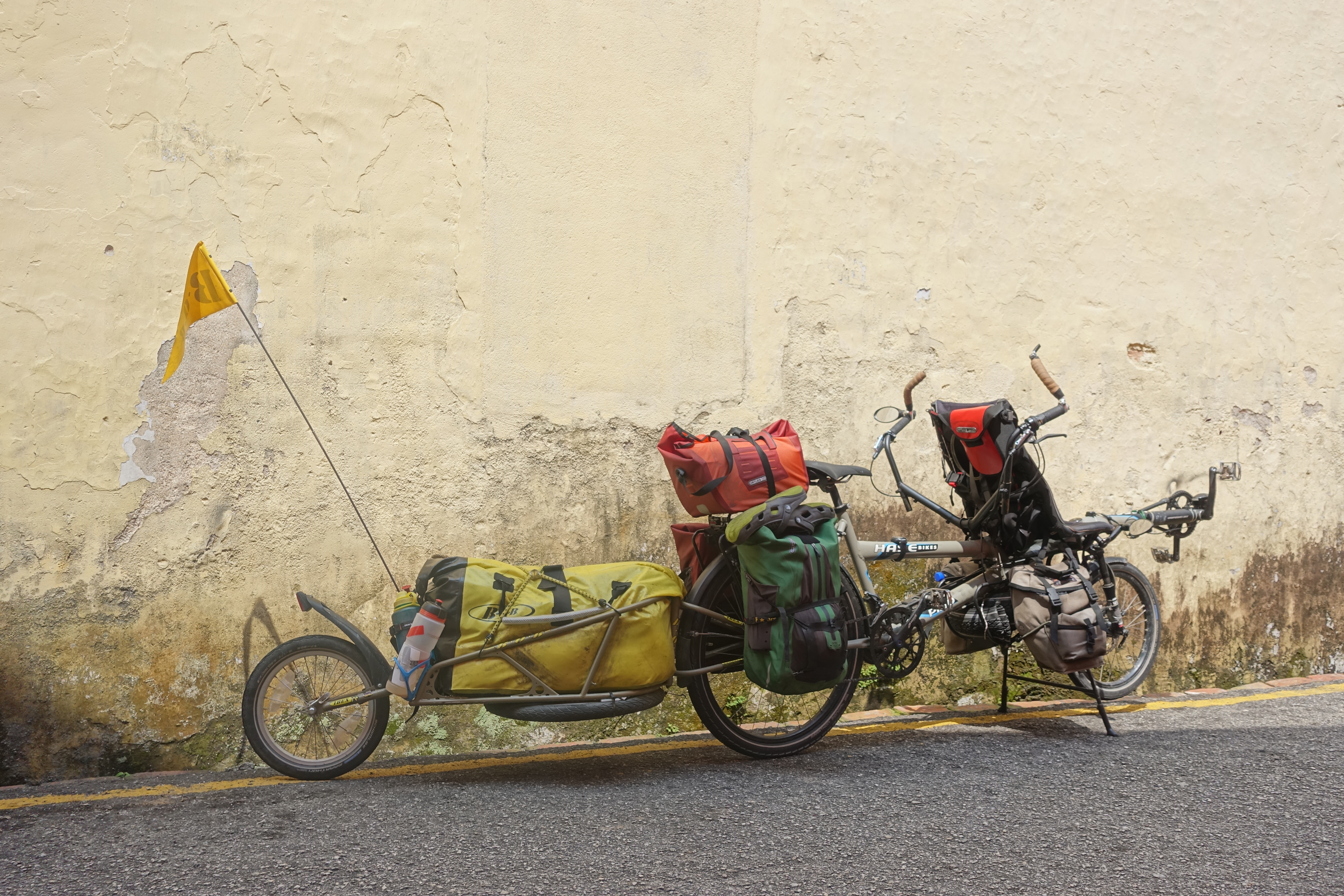
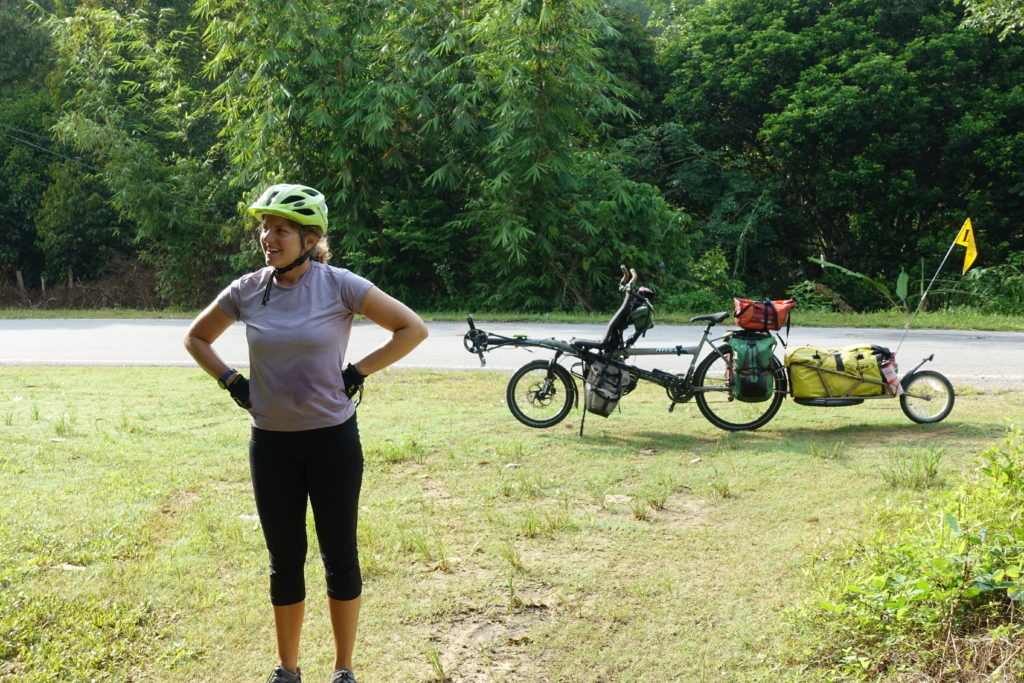
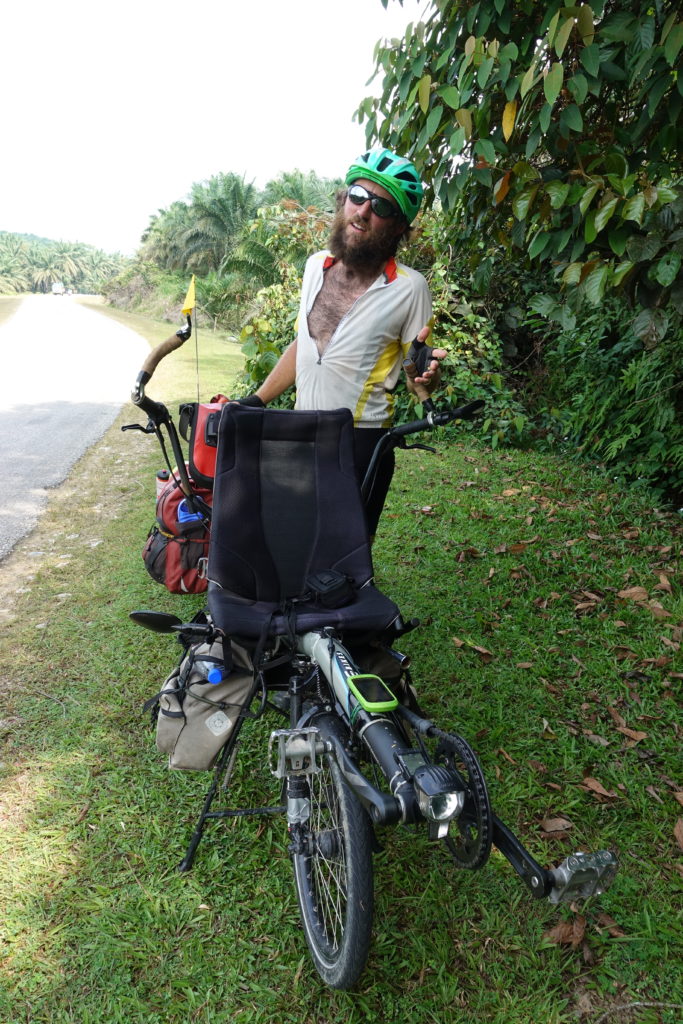
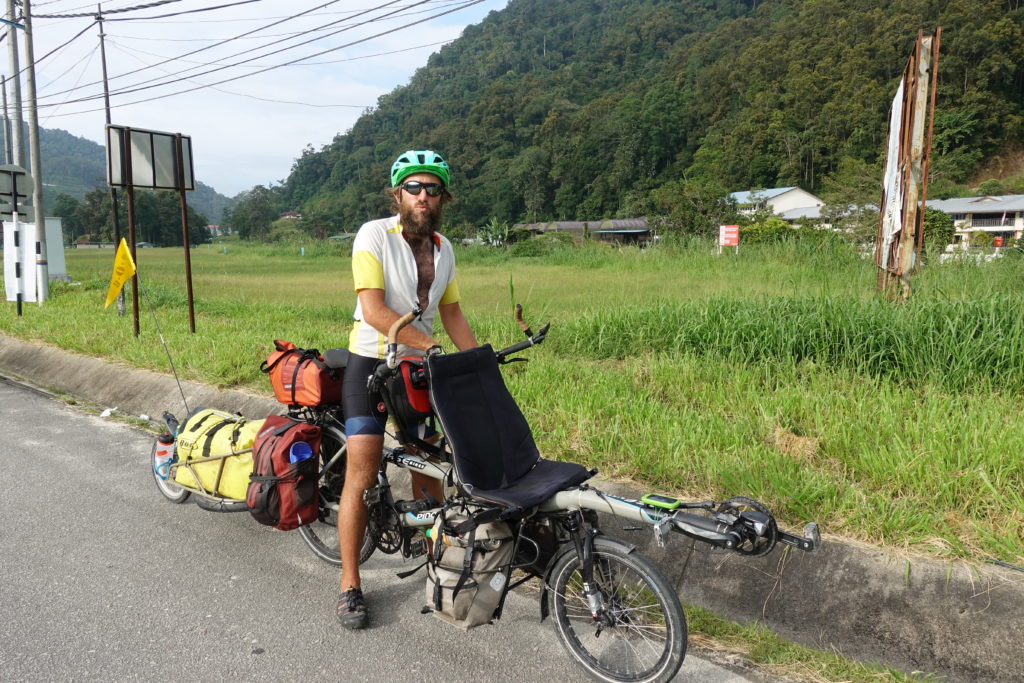
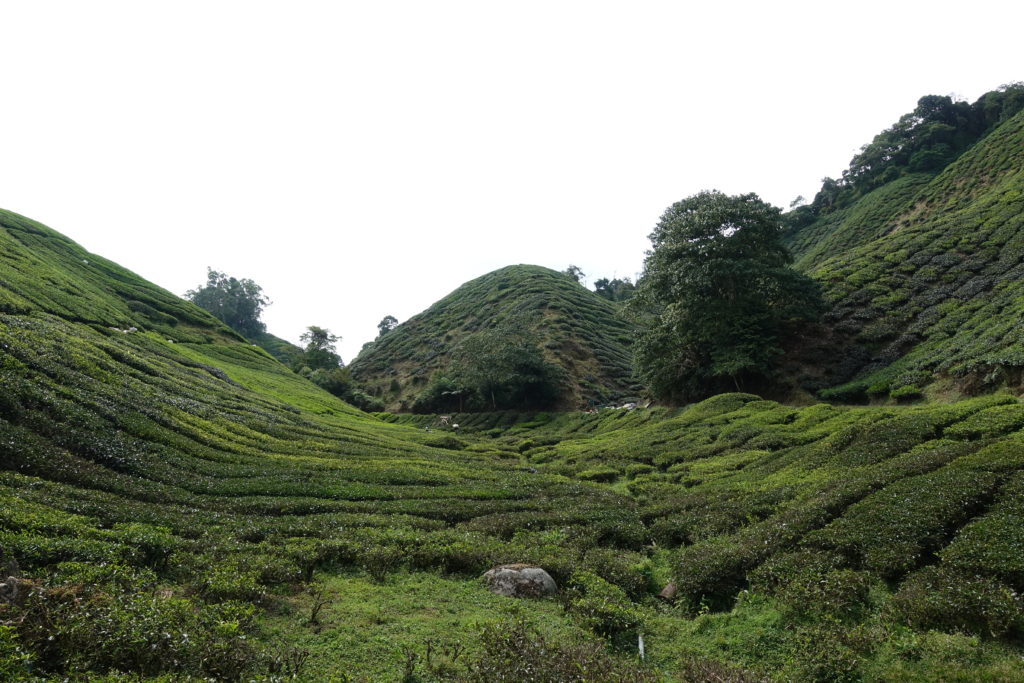
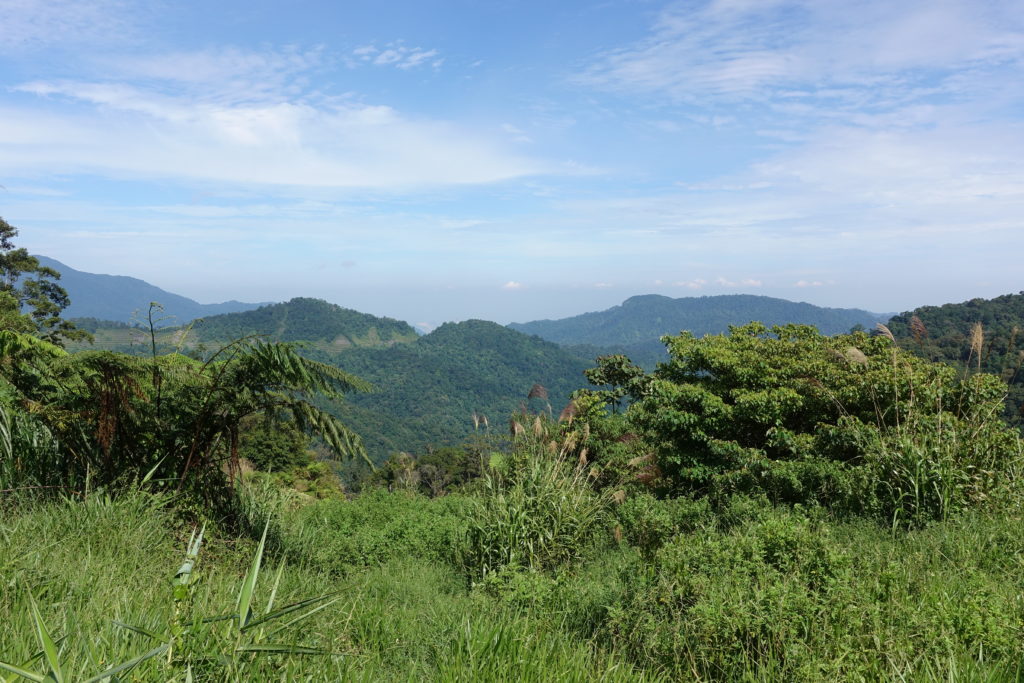
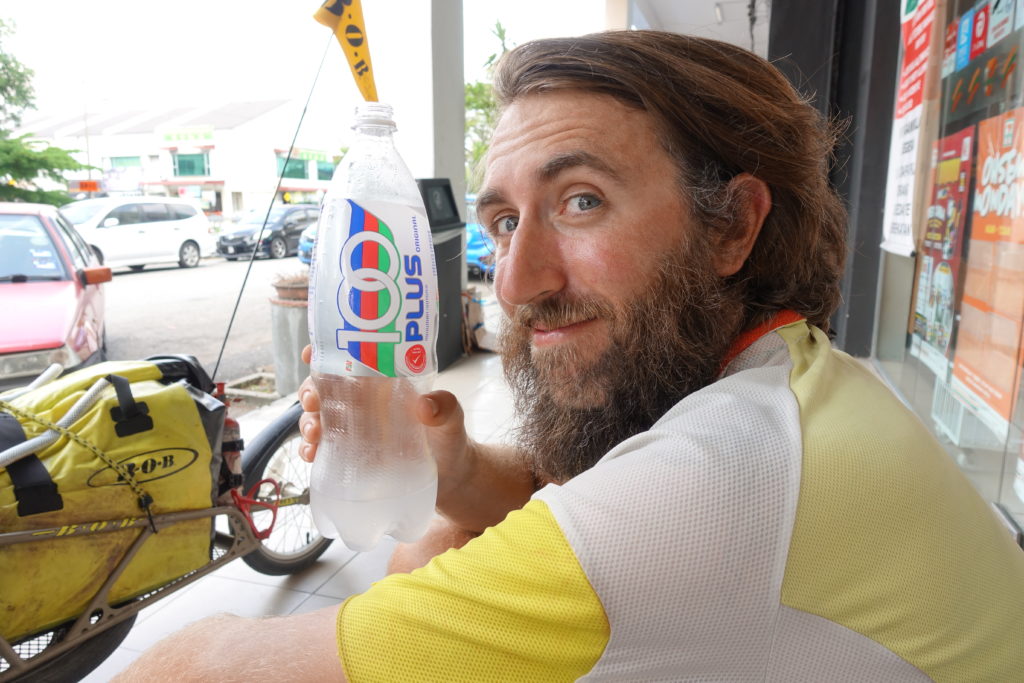
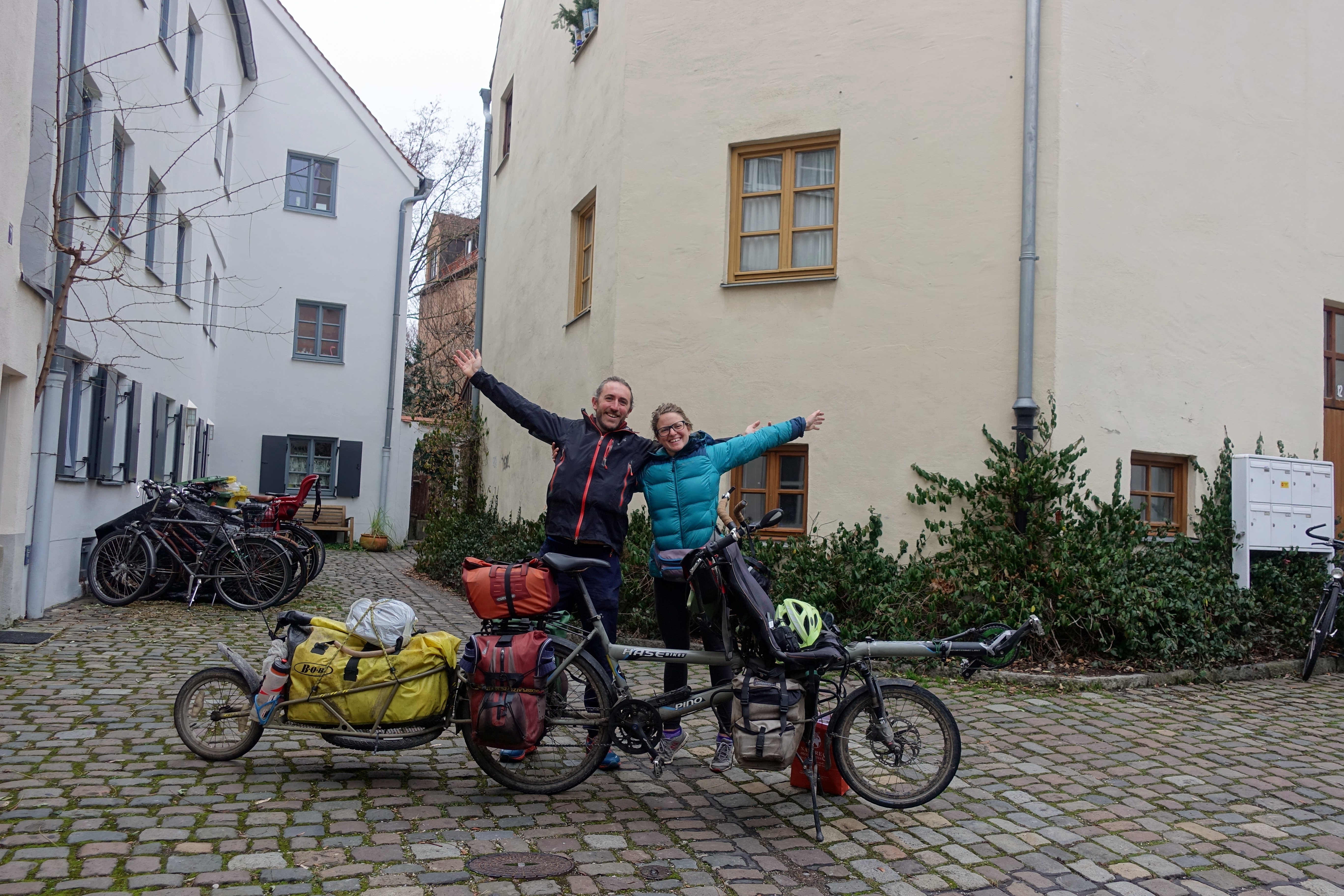

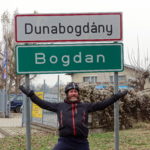
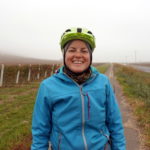
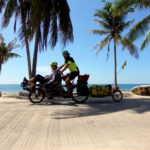
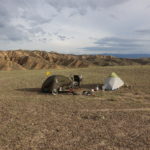
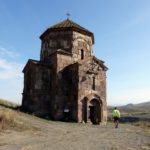
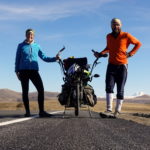
Colby
June 28, 2018 — 00:15
Cassie and Cedric, with the high heat and humidity, is it better to have ‘no sweater’ (Cassie), or a ‘forever sweater’ (Cedric)?? Someone needs to invent a battery powered (think pedal powered) ‘cool suit’. Oh, astronauts have one, just theirs would not work where there is gravity (too much weight and also theirs limits mobility of the limbs).
Finally, after watching the videos, I see the roads there may be better than a number of the pothole riddled roads here in Michigan. Do you come across ‘orange barrels’ at all? They’re a common sight here 🤪. Love you!
Josette
June 30, 2018 — 02:11
The massive number of greenhouses is impressive! The tea plantation photos are beautiful; is there a certain tea that is most prevalent there? Finally, your comment about the ugly cement construction reminded me of Dave and my first impression of Prague when we were leaving the airport, butt-ugly Russian construction.
Cassie & Cédric
June 30, 2018 — 04:23
Ha, those marvelous sovietic concrete constructions in eastern Europe…
They probably did their job as cheap social housing at some point, but will probably fall apart in a few decade (and if anything remains in year 2100, possibly become 20th century landmarks?).
I’m Malaysia it looked more like a growing middle class wanted to get a cheap weekend/vacation apartment, not too far from Kuala Lumpur, in what was considered an idyllic region (with apparently a lot less greenhouses and constructions only a few years ago).